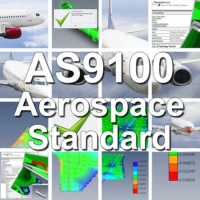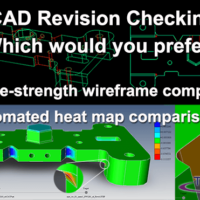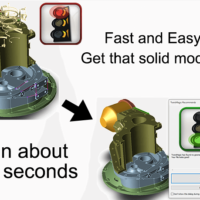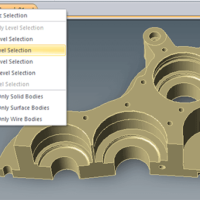
by Brad Strong | Oct 10, 2016 | Blog, CAD Comparison, CAD Translation, CAD Validation, What's New
Last week we overviewed the advantages TransMagic can give aerospace manufacturers who need to comply with the AS9100 standard. This week we dig into Boeing spec D6-51991. Part 2 of this article covers Boeing D6 Spec Translations; if you need information on Aerospace Standard 9100, see the AS9100 article here. Boeing maintains strict standards for CAD geometry used for their design and manufacturing processes; if you are a supplier to Boeing, or a sub-tier supplier to Boeing, you may be subject to requirements of Boeing Spec D6-51991, which consolidates and replaces several previous requirements. This post will focus on section 7.5 of the spec,...

by Brad Strong | Sep 28, 2016 | Blog, CAD Comparison, CAD Performance, CAD Translation, What's New
Aerospace Standard AS9100 is a standard for quality management systems (QMS) for the aerospace sector. This standard is based on ISO 9001, but with additional aerospace-specific requirements added; it is a global standard, and is published by different countries separately. The AS9100 standard was first released in October 1999 by the Society of Automotive Engineers and the European Association of Aerospace Industries, but it continues to evolve; AS9100-C was released in 2009, and AS9100-D was released in September of this year (2016). AS9100 is Concerned with Processes How do the all the processes in the company interact and integrate? Organizations keeping...

by Brad Strong | Sep 19, 2016 | Blog, CAD Comparison, What's New
When checking customer revisions, if you miss a change, there is the potential to order wrong parts and even manufacture wrong parts. I sometimes ask TransMagic users how often their customers make changes that are undocumented; one said “oh, about 85% of the time”; another said “7 out of 10 times”. Apparently it is not that unusual for the customer to fail to communicate all the changes made at each revision. If estimators of the manufacturing world miss a single customer change they run the risk of: Misquoting the part, thereby potentially charging too little for the tooling they create Creating the wrong tooling, thereby wasting time...

by Brad Strong | Sep 7, 2016 | Blog, CAD Repair, CAD Translation, Support, What's New
Imagine that you have a part or assembly that is difficult to repair; what you’re after is a watertight solid. Here’s a classic repair scenario that demonstrates the use of different selection modes in the context of a repair situation. The main purpose of this process is to delete any construction or ‘scrap’ geometry that may be interfering with the repair process; such ‘scrap’ has been artificially created for this example, but it’s common enough in real-world examples. TransMagic has other techniques and tools, but this is one of the more common and effective. We’ve broken this process down into ten steps,...

by Brad Strong | Aug 29, 2016 | Blog, CAD Repair, CAD Translation, Support, What's New
Choosing Your Selection Options At first glance, it looks as if there are only four geometry selection options in TransMagic – Single Select, denoted by an arrow, Window Select, denoted by a rectangle, Select All Entities and Deselect All Entities (see screenshot at right). However, there is a drop down arrow to the right of the top two buttons, which allows you to filter out entities. Selection filters can be applied in the following ways. Dynamic Selection Assembly Level Selection Body Level Selection Face Level Selection Edge Level Selection Vertex Level Selection PMI Level Selection Select Only Solid Bodies Select Only Surface Bodies Select Only Wire...

by Brad Strong | Aug 25, 2016 | Blog, CAD Comparison, CAD Performance, CAD Translation, What's New
In Six Reasons to Avoid IGES Files, we made the case that IGES, at 20 years old, is no longer an optimal format for manufacturing. In this article we’ll look at three categories of format that have proven success in manufacturing. The best alternatives to IGES, in order of preference: #1 – Go Native There is often a reasonable bridge to be found between the format you’ve been given and the CAD system you need to bring it into. The best possible workflow is to get the native file from your customer or supplier, open it in your CAD system and make the necessary edits, and then give it back to the customer or supplier in their native format again. For...







